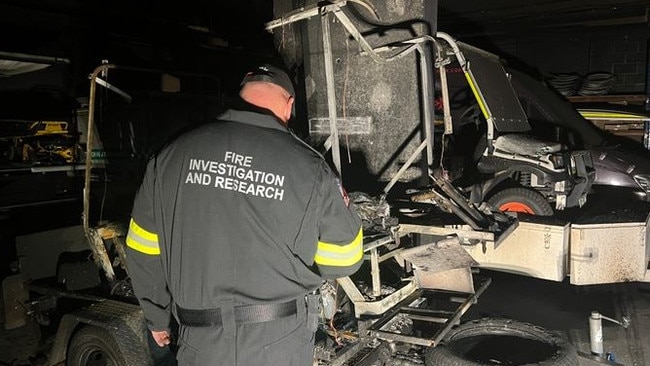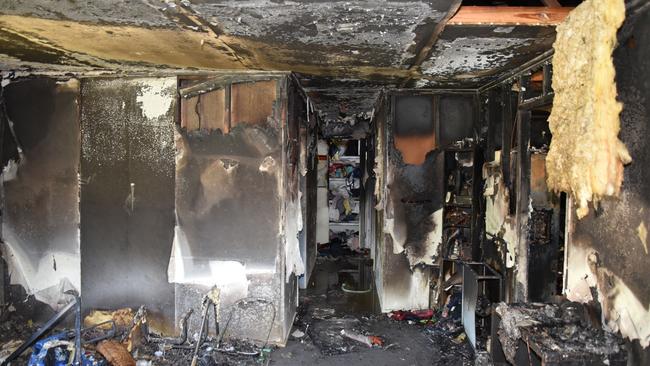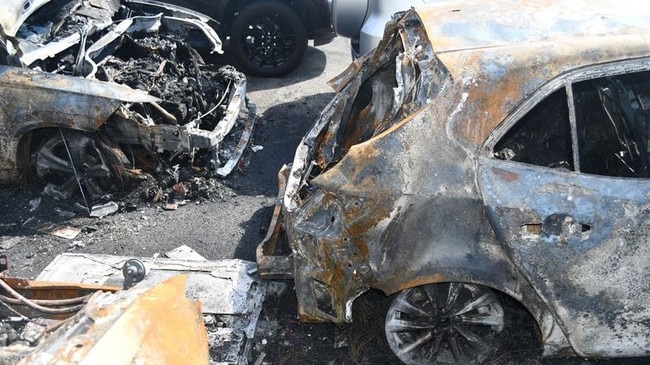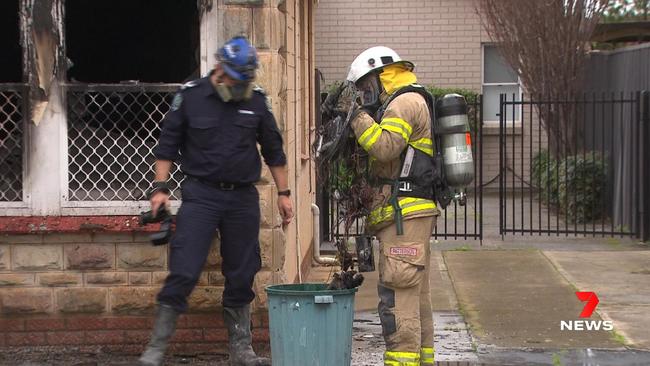The ‘ticking time bombs’ inside Aussie homes sparking a rising number of fires
An increasingly common item poses a growing risk to Australians, capable of exploding and injuring or even killing those in proximity.

Gadgets
Don't miss out on the headlines from Gadgets. Followed categories will be added to My News.
A spate of fires sparked by exploding lithium-ion batteries in e-scooters and e-bikes in recent months has prompted renewed safety concerns.
Data obtained by news.com.au shows emergency services have responded to hundreds of incidents in the past 18 months, some of which led to serious injury and even death.
“We’re concerned about the number of lithium-ion battery fires we’re seeing,” New South Wales Fire and Rescue Superintendent Adam Dewberry said. “And the number this year is well-and-truly trending up.”

There were 165 fires involving lithium-ion batteries across NSW in 2022, while there have been 114 incidents already this year, up to July.
Last month, a 54-year-old man died when a lithium-ion battery stored inside his Punchbowl apartment exploded. When fire crews arrived, they found his lifeless body on a bathroom floor and suspected he had perished after inhaling toxic fumes while trying to contain the blaze.
Early on Friday morning, a battery in a golf cart-style buggy exploded at a St John’s Ambulance facility in Burwood in Sydney’s inner-west.

Three medicab vehicles were damaged. It took fire crews more than 90 minutes to bring the blaze under control.
And just yesterday, firies were dispatched to respond to two separate fires involving exploding e-bike batteries.
Queensland Fire and Emergency Services reports a total of 107 fires caused by lithium-ion batteries last year, while the tally for 2023 so far is sitting at 93.
In March last year, a 22-year-old man died when a scooter battery caught fire in his caravan in Logan Central. His pregnant partner sustained burns to 80 per cent of her body and had to be placed in an induced coma.

A spokesperson for Fire Rescue Victoria said: “Victoria’s fire services are responding to an average of one significant lithium-ion battery fire each week, and this trend is expected to increase.”
One of those was earlier this month when a house fire in Lalor was caused by a battery in a model toy bought online from overseas, leading to significant damage throughout.

Fires related to electric vehicles or hybrid cars with a rechargeable battery are rare, with just two reported in NSW in 2023, Superintendent Dewberry said.
Both occurred last week – one on the Hume Highway and another in a car park at Sydney Airport, he said. In the first, a tail shaft blew off a truck and hit the car, piercing its battery. In the second, a battery was removed from the vehicle and left exposed in the elements.
In 2022, there were four incidents involving electric or hybrid vehicle fires.
What is of growing concern is the booming popularity of smaller devices powered by batteries, which are typically kept indoors, he said.
“It’s definitely an area of interest for us, that’s for sure – especially with these smaller devices.”
Matthew Priestley from the Energy Systems Research Group at UNSW said there is “very little regulation” surrounding lithium-ion battery safety.
“We want and need this energy storage technology to be safe because they are vital in the uptake of renewable energy and it’s important that the public and industry do not perceive it to be dangerous,” Dr Priestley said
“But at the moment, most people do not have an adequate understanding about the risks associated with these batteries, or enough respect for them. I don’t think there is enough education regarding proper use and storage, and recycling or disposal. That is the key moving forward.”


‘Ticking time bombs’
Lithium-ion batteries are “amazing devices” capable of storing 10 times more energy than a conventional battery, used in everything from phones to electric cars and power plants, Paul Christensen, an electrochemistry professor at Newcastle University in the UK, said.
“But in my view, the penetration of these fantastic devices into all levels of our society has far outstripped our knowledge of the risks and hazards,” Professor Christensen said.
“I’m not trying to demonise them at all. They’re regarded as essential in our fight to decarbonise the planet.”
However, if a battery is over-charged, overheats or sustains damage, it has the high likelihood of generating “huge quantities of explosive and toxic gas”, known as ‘thermal runaway’.
“If that gas gets out in an uncontrolled fashion, it can – and has – caused rocket-like flames or even explosions.”

A lithium-ion battery can leak up to 500L of gas per kilowatt hour, Professor Christiansen explained.
“A kilowatt hour is a measure of how much energy the battery stores. Typically, an e-scooter battery is a quarter of a kilowatt hour, whereas an e-bike battery is about three quarters. So, they’ll produce 125 or 375L or explosive and toxic gas.”
If it ignites immediately, intense flames of 1000C or more can be produced. If the gas fills a room, an explosion is likely.
“You might only have seconds before a major vapour cloud explosion or those rocket-like flames,” he said.
Research by the organisation EV Fire Safe found that if a battery goes into thermal runaway inside a home, there is a 64 per cent chance of being injured and requiring hospitalisation, and a 7.8 per cent chance of death.
Panic erupted earlier this year when it emerged an Australian online auction house had sold 40 discounted e-scooters that were water-damaged, posing a serious risk to buyers.
One of them later caught on fire while left on charge overnight. A man and his son woke to find the living room of their Northern Beaches home engulfed in flames.
“These damaged e-scooters were effectively ticking time bombs, ready to explode inside family homes across New South Wales,” Fire and Rescue NSW Assistant Commissioner Trent Curtin said at the time.
Be alert, not alarmed
With proper precautions, consumers can dramatically reduce the chance of a fire or an explosion, Professor Christiansen said, but with an increasing range of uses, the potential for problems is growing.
Rough estimates indicate there are between 250,000 and 300,000 electric scooter owners in Australia. There were about 75,000 e-bikes sold across the country in 2021.

Consumers should only buy a product with a lithium-ion battery from known and trusted companies and only use the charger supplied, Professor Christian said.
“Never buy one that requires the user to manually turn it off when charging is complete. And never charge a battery indoors, ever – full stop, period.”
If something goes wrong, “you might only have seconds” to escape disaster, he added.
“If you hear popping, hissing or screaming, or you see any kind of gas or smoke venting, do not attempt to deal with it yourself. Leave the building immediately, alerting other occupants, and phone the fire brigade.”
Originally published as The ‘ticking time bombs’ inside Aussie homes sparking a rising number of fires

